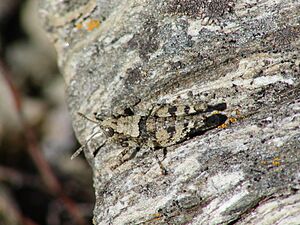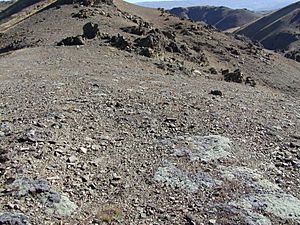Sigaus childi facts for kids
Quick facts for kids Sigaus childi |
|
|---|---|
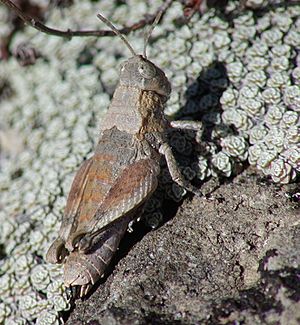 |
|
| Female | |
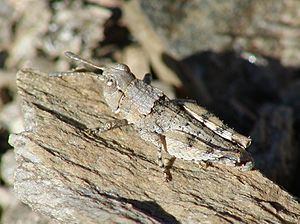 |
|
| Male | |
| Scientific classification | |
| Kingdom: | |
| Phylum: | |
| Class: | |
| Order: | |
| Family: | |
| Genus: | |
| Species: |
S. childi
|
| Binomial name | |
| Sigaus childi Jamieson, 1999
|
|
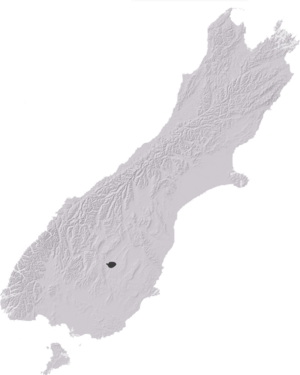 |
|
| Distribution of S. childi | |
Sigaus childi is a special type of grasshopper found only in the Alexandra area of the South Island of New Zealand. It is an endangered species, which means it is at risk of disappearing forever. This grasshopper is one of only two grasshopper species in New Zealand that are protected by law. The other one is called Brachaspis robustus.
The Department of Conservation in New Zealand says Sigaus childi is "At Risk, Naturally Uncommon." This means it's not found in many places naturally, and its numbers are low. The group of grasshoppers it belongs to, called Sigaus, is endemic to New Zealand. This means they are found nowhere else in the world.
Contents
How Sigaus childi Got Its Name
Scientists give every living thing a unique name. Sigaus childi was first described by a scientist named Colleen Jamieson in 1999. She studied a male grasshopper found in 1997 at a place called Galloway Station in Otago.
The species was named after species:Peter Child, who was from Alexandra. He was the first person to find this grasshopper back in 1967. The original grasshopper specimens used for study are kept safe at the Otago Museum in Dunedin.
What Sigaus childi Looks Like
Sigaus childi grasshoppers are masters of camouflage. This means they are very good at blending in with their surroundings. They can be many different colors, like pale grey, earthy browns, green, or even black. Some look just like the foliose lichens (a type of plant-like growth) that grow on rocks. Others look more like small stones or gravel.
These grasshoppers rely on their camouflage to hide from animals that might want to eat them. They don't hop very far to escape danger. Their hops are usually only about 30 to 40 centimeters long and about 15 centimeters high.
Size and Other Features
The wings on Sigaus childi are very tiny, only about 1 to 2 millimeters long. Like most grasshoppers in New Zealand, this species cannot fly.
Male S. childi grasshoppers are about 11 to 13 millimeters long. Females are much bigger, growing to about 21 to 25 millimeters long. Interestingly, these grasshoppers do not have ears, and they do not make any singing sounds.
Where Sigaus childi Lives
This grasshopper lives in a small area of about 200 square kilometers around the town of Alexandra. They are found at heights of 200 to 500 meters above sea level. Scientists have looked for them in other nearby mountain ranges, but they haven't found any more groups of Sigaus childi.
Sigaus childi mostly lives on dry, open hillsides that don't have much plant life. They prefer slopes that face north, where they get more sun. They are rarely found on farms that have been changed by people. Most of their homes look rocky because there are not many tall plants growing there.
Another type of grasshopper, Sigaus australis, also lives in some of these lowland areas. S. australis usually lives in mountain habitats. Sometimes, these two different grasshopper species live in the same places.
Protecting Sigaus childi
Sigaus childi faces several dangers that threaten its survival. Animals that were brought to New Zealand, like cats, rats, stoats, and hedgehogs, hunt and eat these grasshoppers. Even some native animals, like skinks (a type of lizard), also eat them.
Rabbits are another problem because they eat the same plants that Sigaus childi needs for food. These plants include sorrel, hare's-foot clover, viper's bugloss, and Raoulia.
Sigaus grasshoppers developed during past ice ages and are used to dry, open places. Because of this, changes to their natural home, like using irrigation (watering land for farming), can be very harmful to them. As of 2016, the Department of Conservation still classifies this species as "At Risk, Naturally Uncommon," meaning it needs continued protection.


